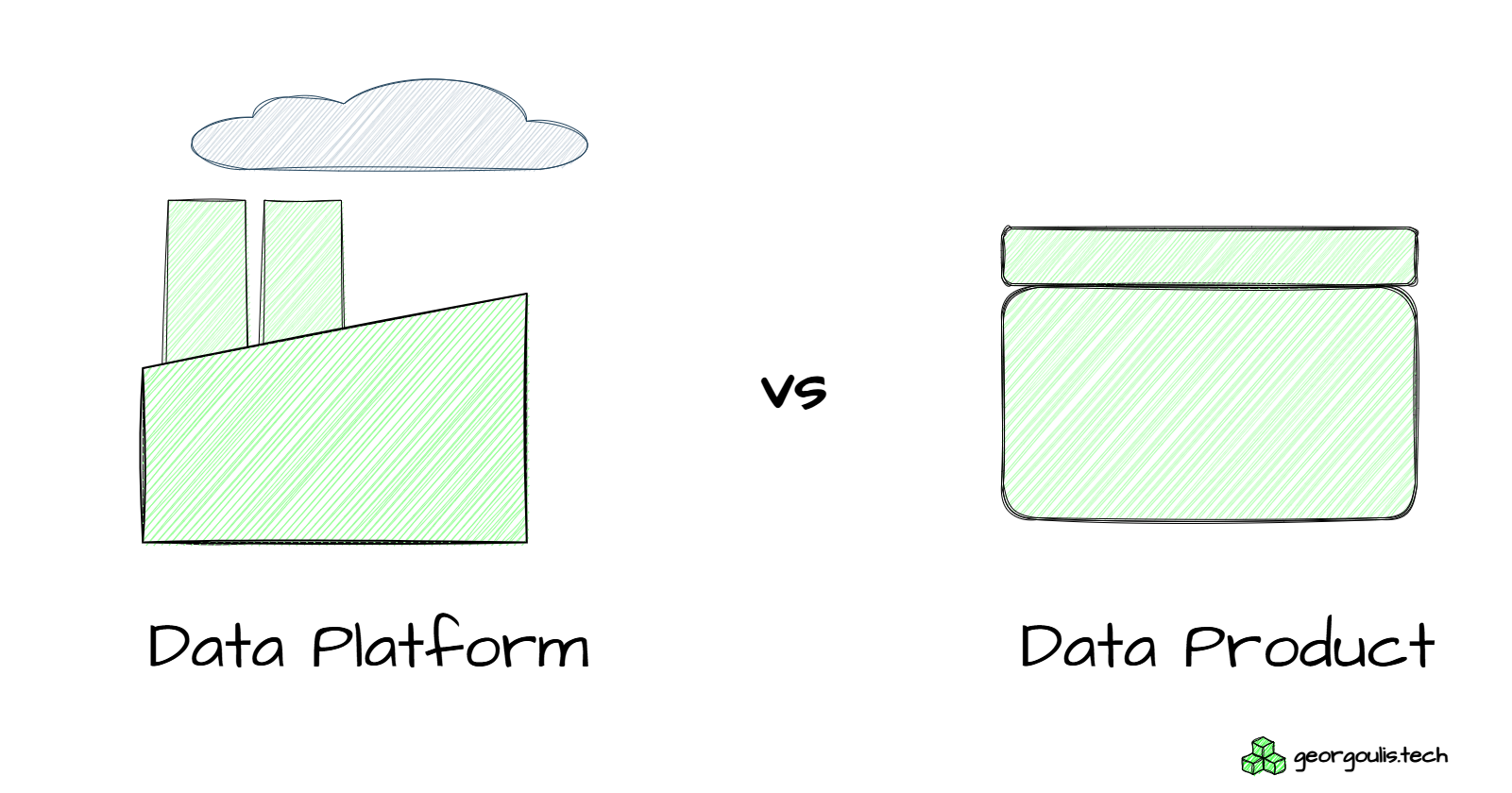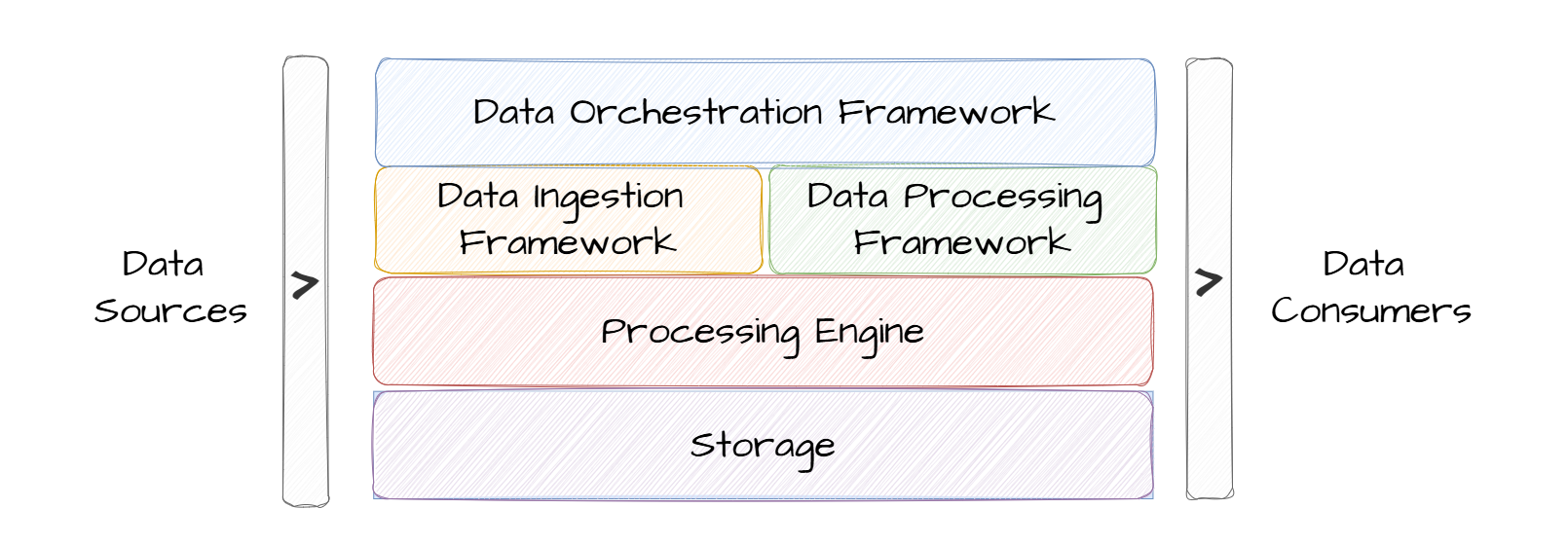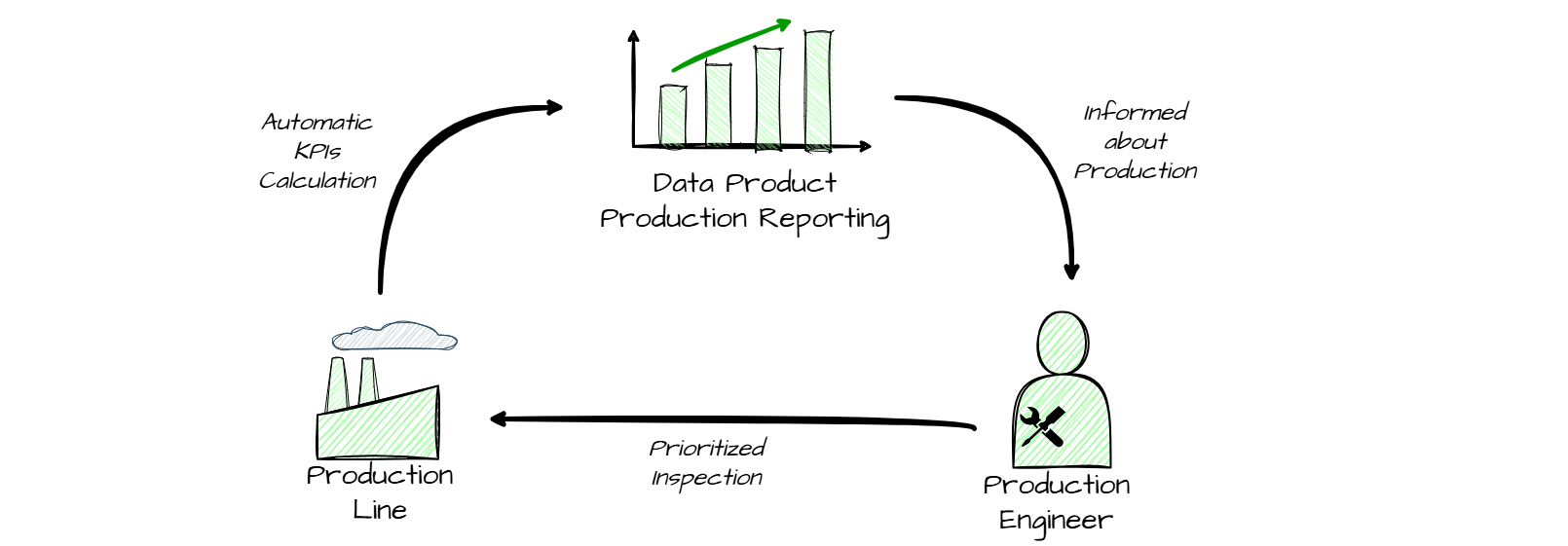Data Platform vs Data Product
 Christos Georgoulis
Christos Georgoulis
In previous discussions I had with colleagues regarding the process of getting requirements for a Data Product, happened to get lost among what should be considered as Data Product requirement and what should be considered as Data Platform requirement. So, obviously those two things are different, but what are their differences, how we know if a feature is data product related or data platform related? This is exactly what I want to walkthrough in this blog post.
What is Data Platform?
A data platform is an architecture that is responsible for data management operations such as data collections, data transformation and storage. Based on its normal operation, an organization can access reliable and trustworthy data. The components of a data platform vary based on the use case. For example, the most common is the batch processing type, where usually composed from a data ingestion framework, a data processing framework, a storage, a processing engine and orchestration framework.

What is Data Product?
A data product is a specific application or tool that leverages data to meet a particular business need or solve a problem. It’s created with the end-user in mind, often using insights, reports, dashboards, or machine learning models to support decisions or automate actions. Unlike the broader, infrastructure-focused data platform, data products are user-oriented and outcome-focused, delivering specific value to a defined group of users.
Data products often include visual dashboards, recommendation engines, customer segmentation tools, or predictive analytics—all tailored to make data more actionable for non-technical users. Their primary aim is to streamline workflows, drive business insights, or enable users to interact directly with data in a meaningful way.
To make it more visual, I would like to describe an example from my past experience in manufacturing. The production engineer, every morning on arrival in the office, first checked the shop floor report, which were a summarize of produced products, defects and downtimes during the past 24 hours. Then, he toke notes on what he should check. Then he could enter the shop floor and walk through every production line he has noted to check the problem, and the trouble shooting of shift technicians. So, the data product gave him all the information needed to catch up with the production line and prioritize properly.

How they are connected?
Think of the Data Platform as the manufacturing plant, handling the raw materials and the processes that transform them, while Data Products are the finished goods, specifically crafted to meet the needs of different customers. The platform’s role is to gather, cleanse, and prepare data so that data products can be built quickly and accurately on top of trustworthy data.
Ideally, the process flows from requirements gathering for data products to designing a platform that supports those requirements. This reverse engineering helps ensure that the platform is robust enough to support multiple data products while avoiding unnecessary features that won’t be used.
Key Differences in Requirements for Data Platform and Data Product
1. Scope and Purpose
Data Platform: Its purpose is to ensure data availability, accuracy, and compliance across the organization. Platform requirements include infrastructure, storage, security, and data governance—all of which provide a foundation for any data product.
Data Product: Its purpose is to deliver specific, actionable insights or tools for users. Product requirements revolve around the user experience, visualization, and how effectively the product can meet the end-user’s needs.
2. Key Users
Data Platform: Primarily serves internal technical users—data engineers, data scientists, and IT teams—who use the platform to store, process, and prepare data for various analyses.
Data Product: Serves non-technical end-users—business analysts, decision-makers, and even external customers—who need access to insights, visualizations, or predictions without needing to understand the technical backend.
3. Functionalities and Examples
Data Platform Functionalities:
Data ingestion frameworks for bringing in raw data.
Data transformation and ETL (Extract, Transform, Load) processes to standardize data.
Data storage (data lakes, data warehouses) for housing large datasets.
Security and compliance measures to protect sensitive data across departments.
Data Product Functionalities:
User-friendly dashboards that visualize KPIs or metrics.
Alert systems that notify users about specific trends or anomalies.
Recommendation systems to suggest actions based on data analysis.
Interfaces or APIs that let users interact with the product and retrieve insights effortlessly.
How to Know if a Feature Belongs to the Data Platform or Data Product
A quick rule of thumb: if a feature or functionality is essential across multiple data products or business cases, it’s typically part of the data platform. If it’s built to meet the needs of a specific group or a unique product function, then it belongs to the data product.
However, not everything falls neatly into these categories. Here are some clarifying questions to help:
Is the feature supporting foundational needs (e.g., data quality or governance)? Likely a platform feature.
Is it primarily for enhancing user experience (e.g., custom report generation or real-time notifications)? Likely a product feature.
Would removing it disrupt multiple products or teams? If yes, it’s probably a core platform feature.
Conclusion
The distinction between Data Platform and Data Product is essential for building efficient, impactful data solutions. A well-designed data platform enables data products to be more agile, scalable, and user-focused, while a well-conceived data product provides immediate, actionable insights that serve specific business needs. In understanding these roles and their interplay, we can build data infrastructure that supports long-term success and products that make a difference in users' day-to-day work.
Subscribe to my newsletter
Read articles from Christos Georgoulis directly inside your inbox. Subscribe to the newsletter, and don't miss out.
Written by
